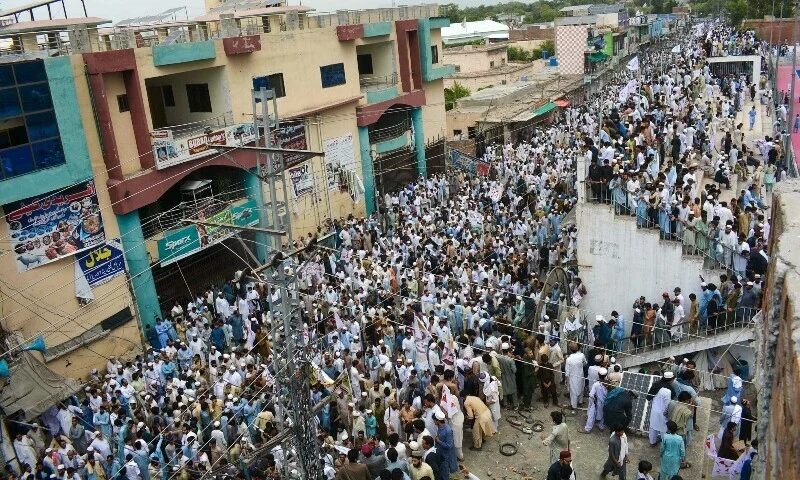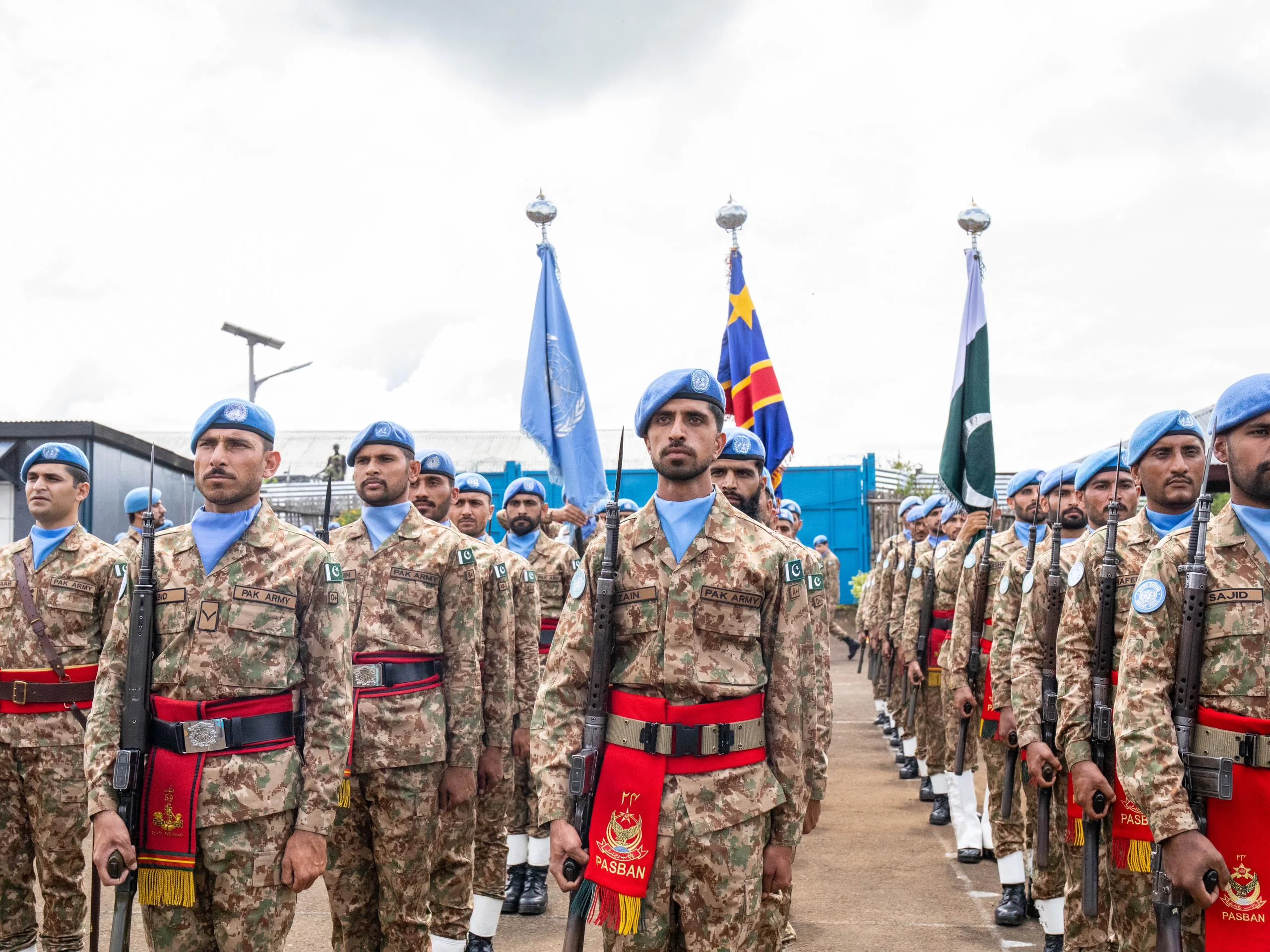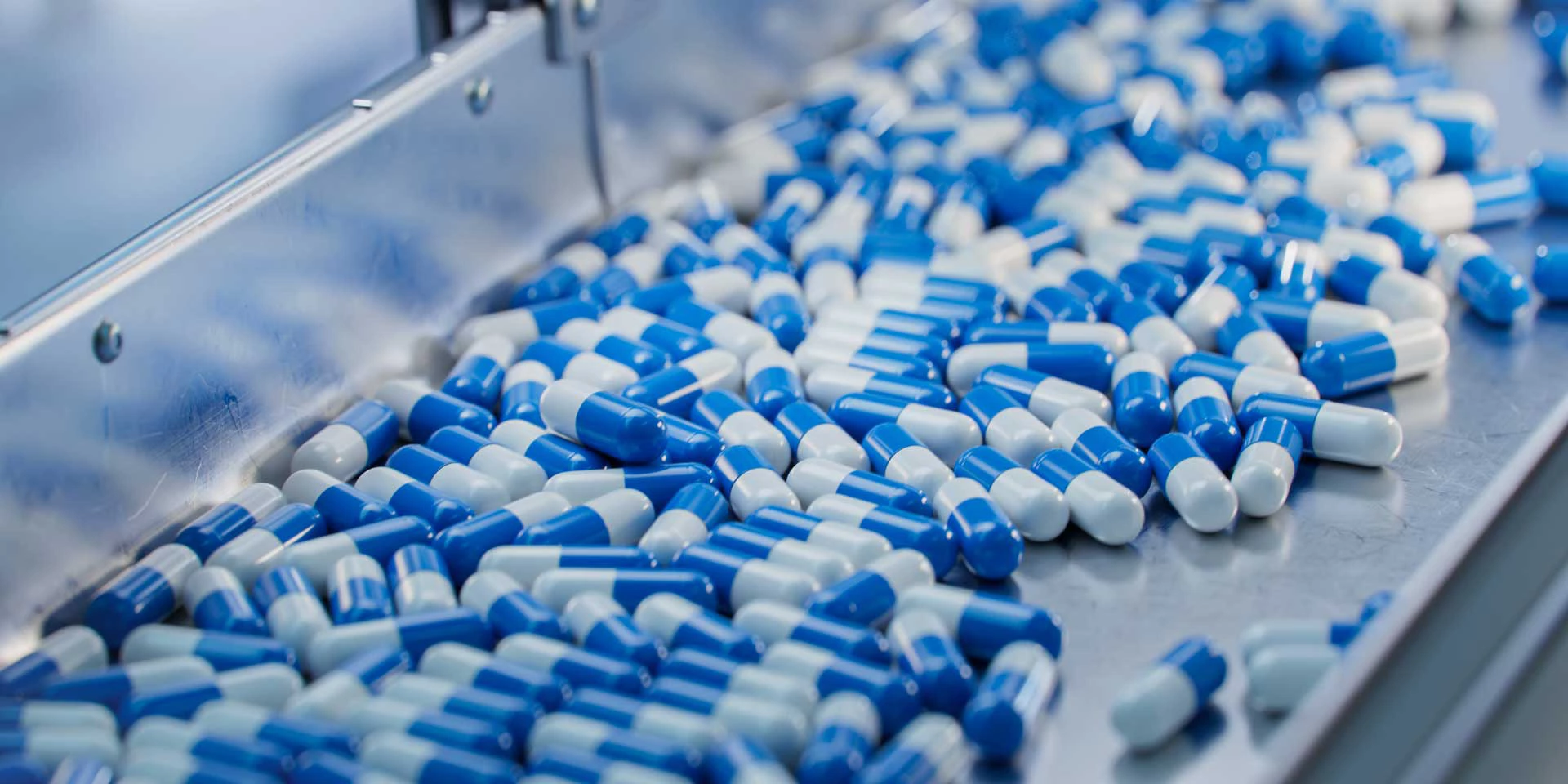The scorching July sun beat down on Islamabad, where the pro-Palestine sit-in stretched into its seventh day. Meanwhile, negotiations between the government and the TLP simmered on, a slow burn amidst the city’s bustle.
Hundreds of miles west, in Bannu, a different kind of tension crackled in the air. Just days after a brutal attack on the Bannu Cantonment by a splinter group of the TTP, a fragile calm had seemed to settle. However, on July 19th, 2024, that fragile peace shattered.
A peace march, a hopeful response to the attack that claimed eight Pakistani lives and wounded scores more, quickly morphed into a scene of chaos. The intended message – a resounding “no” to the rising tide of terror in Bannu – was drowned out by the eruption of violence. Reports reveal that miscreants belonging to the Pashtun Tahafuz Movement (PTM) breached the damaged walls of the very cantonment the march aimed to defend. Panic surged through the crowd as security forces, faced with a sudden threat, opened fire. The dream of peace dissolved into a nightmare of confusion and fear.
Also See: Pakistan Simmers: Bannu Attack Stoke Tensions with Afghanistan
Despite efforts by rally organizers to dissuade these miscreants, the situation spiraled out of control. Social media painted a different picture: a viral video captured a man firing into the air, while a Facebook post from PTM Peshawar urged members to bring firearms to the Bannu sports complex after Friday prayers.
Critics pointed a finger at PTM and its affiliates. Bannu, a city simmering with diverse political allegiances, seemed to erupt most violently during their protests. Moreover, the presence of PTI ministers at the rally added another dimension to the situation. Were their motives purely peace-seeking, or was there a political game afoot?
Analysts painted a more nuanced picture. The violence, they argued, wasn’t a one-act play. It was a tangled drama with multiple actors – PTM’s actions, the TTP’s ever-present threat, and various political factions, including the ruling PTI, all playing their parts in a tragic exploitation of Pashtun grievances. The quest for peace in Bannu tattered, leaving behind a chilling reminder: sorting out truth from manipulation in this region is a perilous task.
Notably, these recent events in Bannu echo a disturbing choreography – a pattern of kinetic and non-kinetic tactics used by TTP and PTM. First, the TTP spins a deadly web of attacks, drawing a fierce response from security forces. Then, PTM swoops in, exploiting the pain and fear to rile people up. This symbiotic relationship—a TTP act of violence followed by PTM’s exploitation—is a cause for grave concern and demands a strategic response from policymakers.
Primarily, from Khar Qamar in 2019 to the Bannu incident in 2024, the pattern remains similar. TTP launches an attack, provoking a response from law enforcement agencies, followed by PTM’s agitation. This cycle attracts political dissidents, radical ethno-fascists, and TTP ethno-religio extremists and sympathizers, all united under the banner of Pashtunism. These non-kinetic actions are then amplified by coordinated efforts from across the border, involving TTP sympathizers and so-called activists, further complicating the situation.
Therefore, the PTM’s actions suggest a coordinated effort with TTP to destabilize the state, demoralize security personnel, and spread false propaganda. The group’s political maneuvering and use of innocent lives for political gain have exposed its true motives. The Bannu incident highlights the need for a comprehensive strategy to neutralize TTP, address PTM’s subversive tactics, and ensure stability in the country.
However, there is more to the situation than what appears on the surface. The historical record whispers of tribal ties—revealing that PTM’s leadership originates from tribes linked to TTP’s activities.
Data suggests PTM’s leadership comes from key tribes in Waziristan: Ali Wazir from the Wazir tribe, Manzoor from the Mehsud tribe, Mohsin from the Dawar tribe, and Abdullah Nangyal from the Bhittani tribe. These tribes were historically linked to TTP’s activities. After facing setbacks during military operations, TTP’s facilitators seemingly found a new home within PTM, creating a political facade for the militant group.
Moreover, the involvement of dubious NGOs in supporting EFSAS, PTM, and Baloch separatists, as highlighted by EU DisinfoLab, further complicates matters. This convergence of interests between TTP and PTM, supported by dubious NGOs and external actors, has created a complex hybrid challenge. Such associations tarnish social movements and impede genuine issue resolution. If policymakers sitting in their cozy offices do not see this through, it may be too late to break the nexus between these groups.
In 2022, another thread in this complex web was added when the TTP launched a spring offensive against Pakistani forces. During this period, PTM’s Mohsin Dawar came under scrutiny for his controversial remarks in Parliament on April 16, 2022. He criticized the Pakistan Air Force and falsely claimed that 40 internally displaced persons (IDPs) from Waziristan had been killed. This incident highlighted the troubling synergy between Noor Wali Mehsud-led TTP and PTM.
The evolving situation is a stark reminder of how ethno-religious and ethno-cultural sectarian groups, from Mukti Bahini to PTM, TTP, and TLP, are intricately linked with Pakistan’s security dynamics. Pattern analysis reveals that exploiting fault lines appears to be a strategic approach, making PTM’s support for Noor Wali Mehsud-led TTP unsurprising. This interconnectedness stresses the need for a comprehensive strategy to address the multifaceted threats facing Pakistan.
The TTP, a cunning strategist, exploits the fault lines of ethnicity, co-opting the grievances of Pashtuns and Balochs to fuel their fire. Noor Wali Mehsud’s own manifesto, “Inqilab-e-Mehsud,” reads like a director’s note, outlining this ideological shift. He pays homage to Manzoor Pashteen, acknowledging PTM’s role in amplifying the TTP’s message in advocating ‘Pashtun Watan’.
This symbiotic relationship between violence and manipulation becomes a vicious cycle of violence and anarchy, with anarchists wanting to keep violence alive to thrive. Without the TTP’s violent acts, PTM’s narrative loses its potency. It’s a game of thrones, with chaos as its ultimate prize. This is precisely what PTM is doing—thriving on chaos and conflict to advance their own agenda.
The Bannu incident serves as a stark reminder. It underscores the urgent need for a unified strategy, a new script altogether, to address the complex interplay of TTP, PTM, TLP, and PTI. Each group, with their own motivations – the TTP’s brutality, PTM’s manipulation, TLP’s ethno-religious agenda, and PTI’s political maneuvering – contributes to the current state of chaos. This tangled web of self-interest threatens the fragile fabric of peace in the region.
The state must act decisively, not as a reluctant participant in this tragic play, but as a director determined to rewrite the ending. Only then can order be restored and the curtain fall on this cycle of violence. As Littlefinger, the master manipulator, from the Game of Thrones, once said, “Chaos is not a pit. Chaos is a ladder.” The question remains: will the state climb that ladder toward stability, or will it succumb to the allure of the abyss?






